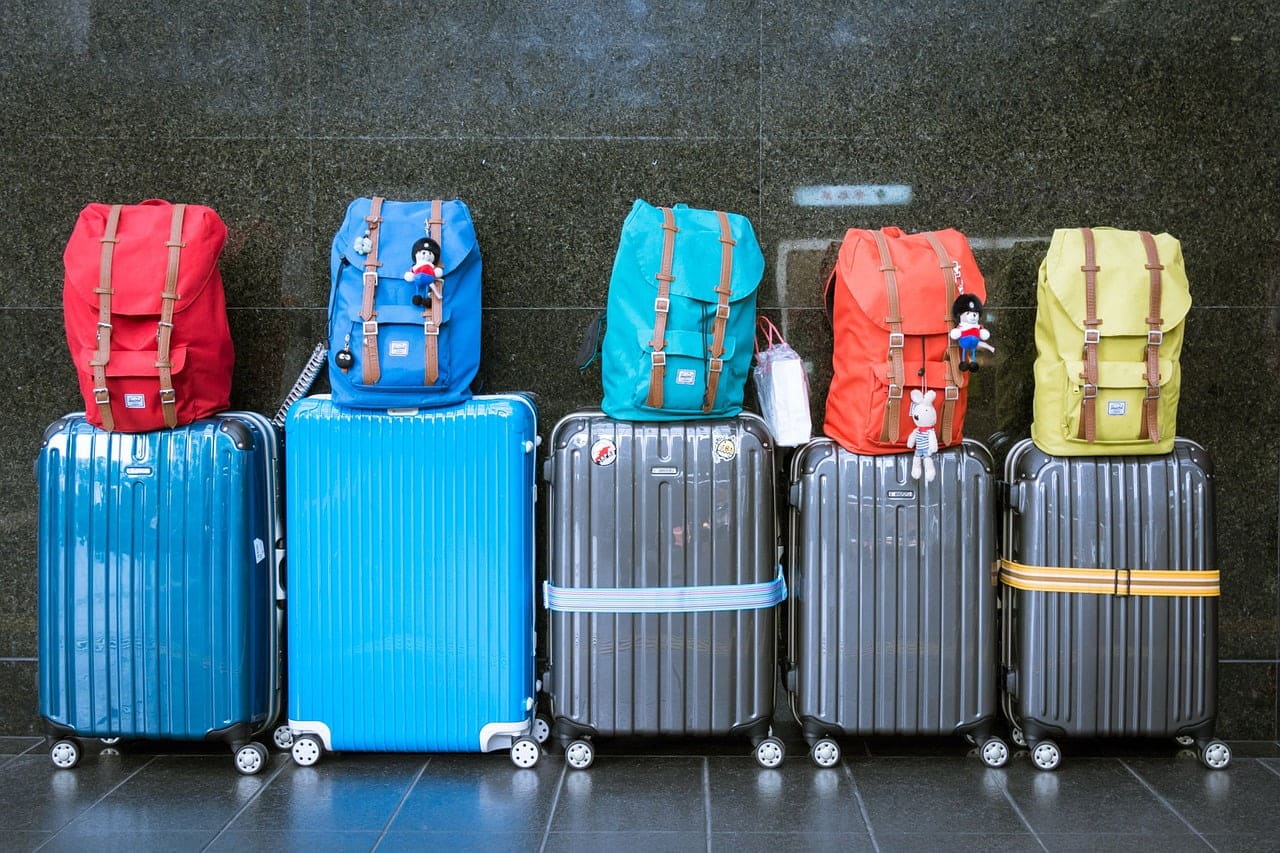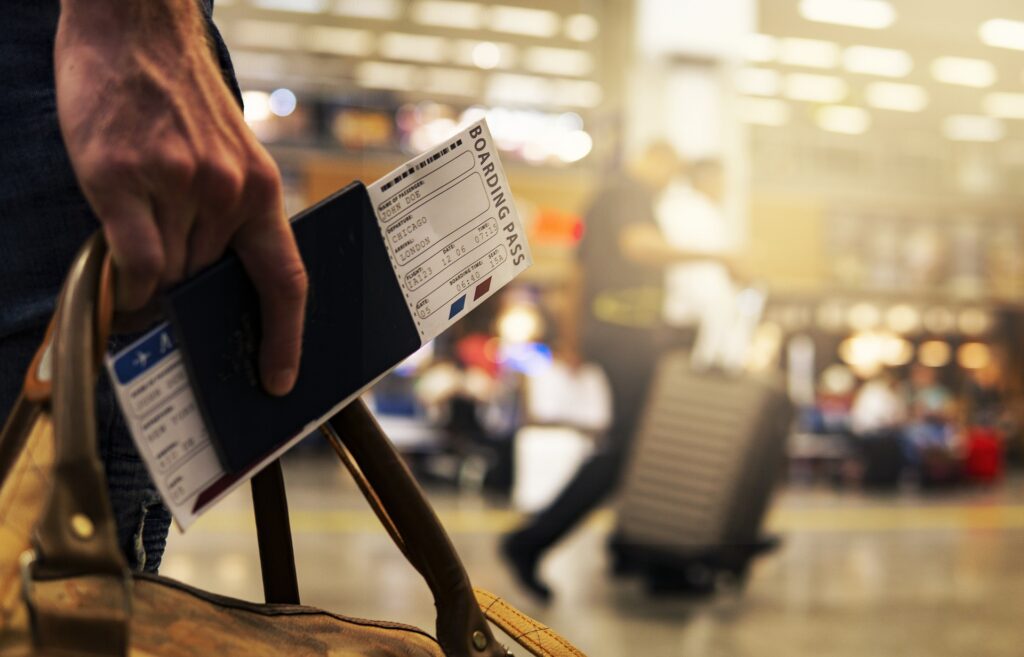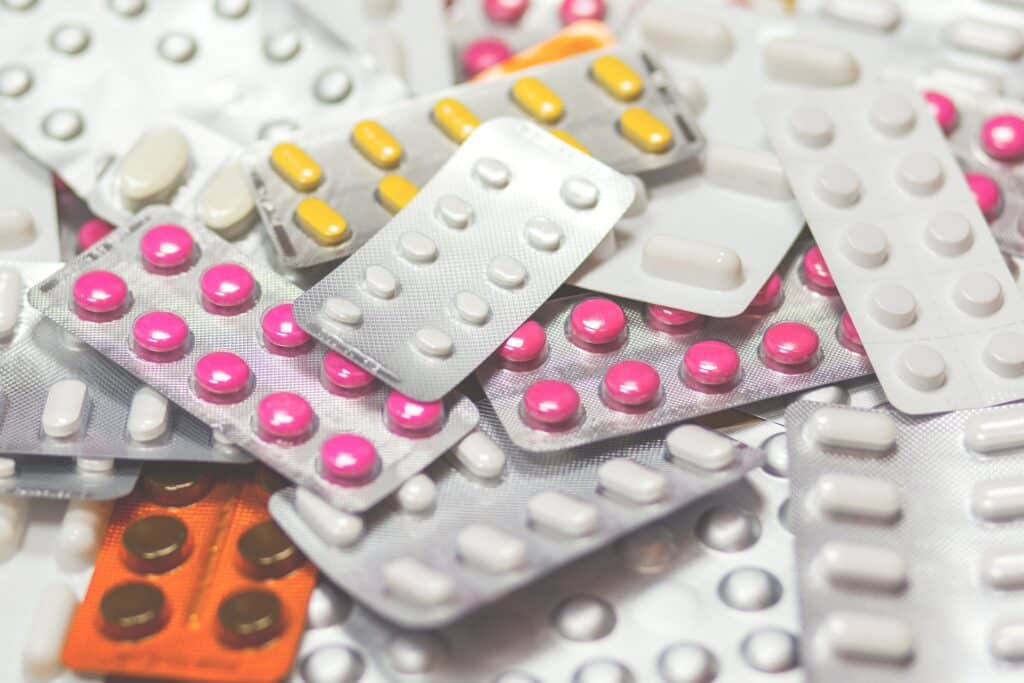Packing for air travel is not always so easy. Unfortunately there is probably a million restrictions and limitations that we have to follow. Especially if we don’t want to loose our stuff. Every airline has its own rules, especially when it comes to the size and number of bags. In this article „How to pack for a flight“ you will find all our tips and tricks..
What can I pack
The size and weight of your baggage depends on the airline and you flight ticket. With most airlines you get one personal item and oftenone carry-on bag included in your basic flight ticket.Personal item includes for example small backpack, laptop bag, purse. It can have following dimension: 35x20x20cm (Ryanair) or 40x30x20cm (Wizzair). Carry-on luggage can have dimensions 55x40x22cm and weight can be between 7kg to 10kg. This baggage has to fit into the overhead compartment. Unfortunately many low-cost airlines will only allow one small personal item. If you also want carry-on you have to pay.
It’s same with checked-in luggage. Many airlines have checked-in baggage included in the price of your flight ticket. pay extra for it. It’s always better to purchase any luggage with your flight ticket or in advance. At the airport the prices are much higher. This also includes oversized baggage.Usually you can have more pieces – for example 4 or 6 bags. Maximum weight of one bag can be 32kg. It’s important that you verify all this information with your airline, too.

TIP: If you prefer extensive travel, you should read this detailed guide on how to save money while traveling long-term.
Carry-on baggage
What you can pack in your carry-on is limited and checked. In general it’s advised to pack all valuables (electronics, jewelry), documents and money in your carry-on. Checked-in baggage can get lost. Therefore it’s always better to have these items with you. Also pack all your medicine for case of emergency. When it comes to liquids, you can find more on that further down in this post. These are a few things you CANNOT pack in your carry-on:
- Guns and objects looking like guns
- Pocketknife
- Sharp objects
- Umbrella with sharp end
- Scissors
- Sport equipment
- Self-defense objects (pepper spray etc.)
And what about batteries? You can travel with batteries up to 100Wh in your equipment without any problem. Spare batteries stronger than 100Wh (powerbank) are also okay. These objects however must be in your carry-on.
EXTRA TIP: Carry-on also has a limited weight. However, good news is that this baggage is rarely weighted.Usually I only saw it when I had to go to the check-in window. As long as you already have your boarding pass and you are going directly to the gate, you will probably avoid this.

TIP: Not sure what to take with you in a carry-on? Check out essential carry-on items that will make your flight more pleasant.
Checked-in baggage
Nowadays you have to pay extra for a checked baggage most of the time. Some long-distance flights offer it for free. You can always choose from different weights and you can have more pieces. What’s great is that with this baggage you don’t have that many limitations as with carry-on. The biggest advantage is that liquids are not limited and you can have higher amounts. Don’t forget! Batteries don’t belong to checked-baggage!
A few tips when traveling with checked baggage:
- If you have more bags divide the most important belongings wisely. If you loose one bag you will still have at least some clothes or shoes.
- Tag all your bags with your name, adress and contact. Some bags already have a tag that you can fill out. If no just find some easily accessible place and leave your tag there. It might be useful to add your itinerary, too. It will be easier to find you.
- Wrap your bag or use a strong strap around it. We all know how our baggage is handled at the airports. If you want to avoid damage it’s better to protect your baggage.A strap will prevent your bag from opening.
I personally avoid using checked baggage when possible. It can get lost anytime. There is also a chance my bags will be damaged. Another disadvantage is that you have to wait for your bags on arrival. I possible, I prefer to travel with carry-on only.
EXTRA TIP: If you are not sure where to pack certain obejcts or if they are allowed at all, you can find all this information on a web tsa.gov. It’s an american website but these rules are valid for most of the flights (if not all).
Liquids in airplane
You can have maximum of 1L of liquidsin your carry-on. They have to fit in one transparent bag with 1l volume. Individual liquids however must be packed in small bottles of max 100ml. Even if your 2l bottle only contains 100ml water it will not pass the check. The case (or bottle) cannot be larger than 100ml. This includes all the pastes, gels and similar stuff.
If you need to fly with more liquids, it’s better to choose checked-in baggage. Liquids in checked-in baggage are not limited.

TIP: Here are some quick tips for finding cheap flights: use Skyscanner, fly midweek or off-peak, set price alerts, and check budget airlines.
Medicine on a flight
You need to provide the original packagewith all your medicine. Don’t put your medicine in other cases/bottles. They can be taken from you. When it comes to liquid medicine (sirups or creams) there is an exception. They can be larger than 100ml. However you need to provide original doctors prescription (also in English). It also needs to be packed in the original packaging from the pharmacy.
Food and drink on board
On most of the flights there’s no problem with having your own food on board. There are few destinations though that have either a complete ban on importing food or very strict regulations. That is the case of travels to UK, USA, Australia or Singapore. As long as you eat all your food on board it’s fine. Also don’t forget that food also follows the 100ml volume rule. This rule includes canned food.
As you probably realized by now you can’t take your 0.5l bottle with water through the airport control.If you don’t want to loose your bottle don’t forget to get rid of all the water before. Right after you pass all the security checks you can fill up your bottle again at the bathroom or buy it at a store (especially in countries without drinking tap water).
Traveling with electronics
If you need to travel with cameras, laptops or some other equipment this section is for you. Great news is that if you have an extra small camera bag it doesn’t count as a piece of carry-on. You can just have it with you as an extra piece of baggage. You don’t need to try and fit it in your classic carry-on or one allowed personal item. Your electronics should never be in checked-in baggage. There are more reasons for that. One of them is that the checked-in baggage can get lost. Handling of this baggage is also not so soft and your expensive equipment can get damaged.



